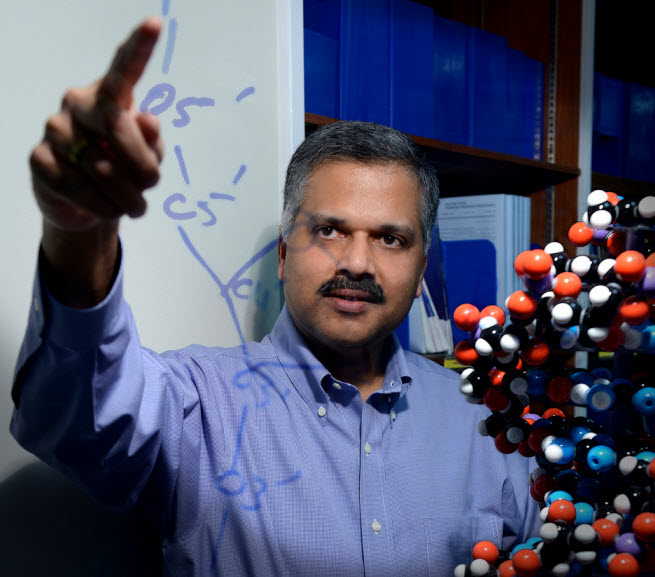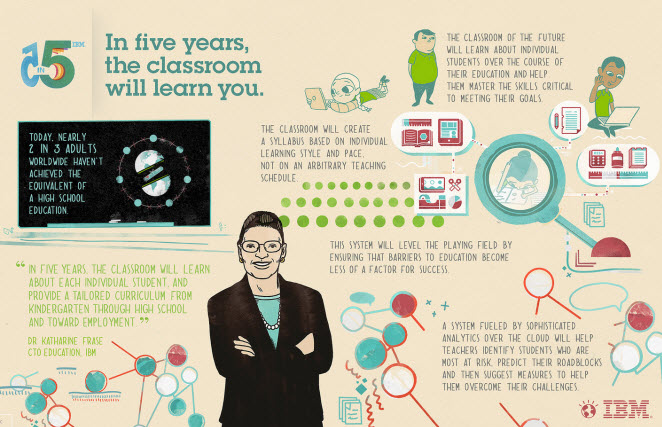VB: So schools making use of data, is that essentially what the first of the 5 in 5 is talking about?
Meyerson: Yeah. Not only does the school collect it, but it uses it in real-time and on an ongoing basis to create a persona, so that you don’t lose history. What you’ve been challenged by, everyone’s aware of it, and they can make sure that going forward you don’t have an issue. It’ll pick up problems like dyslexia instantly, because you’ll see when a child is reading and there’s an inversion of meaning. You make sure that if a child has areas where they have extraordinary abilities, they’re recognized and catered to on an individual basis.
No one teacher—You look at classrooms of 30 kids. A teacher cannot do it all themselves. What this does is that it provides the teacher with the ability to be vastly more effective. It doesn’t replace them – quite the opposite. It enables them to engage more efficiently.
VB: It sounds like the difficult tasks here are instrumenting this, instrumenting the classroom to measure all this.
Meyerson: Strangely enough, it’s not that bad. We’ve run prototypes of this already. If you provide information by electronic media, and you have with that a tablet that they’re working on, you’re essentially capturing all of this in real-time as they run through their exercises or work independently. You can get it pretty quickly. It isn’t rocket science. The real rocket science part is the analytics behind it that take the data and turn it into a useful resource for the teacher.
You might, for instance, norm the behavior of a child. You know exactly how long it takes to complete certain types of exercises. You know all the information you would want to know about that child as far as how they perform. Then what happens is, if you see performance falling far below the norm all of a sudden, it alerts you that there may be a problem at home. Maybe they’re not getting adequate sleep. Maybe the bus transportation is fouled up. Who knows? But the ability to capture data of all types – not just educational, but just data that impacts the health and well-being of a child – all of that is possible. It’s quite powerful.
The key is, it’s all private. This is held encrypted in a persona within the system. You can secure it to an astonishing level, should you choose to do so.
VB: I guess this is already visible, because you have this experiment going with the Gwinnett County schools.
Meyerson: We have a number of schools we’re working with. We gain this data from their feedback. It enables you to learn what’s working and what’s not working in a rush.
The key thing is, you don’t want to waste two years of somebody’s education because somebody has some scheme about how to teach math better, and it turns out they’re just wrong. That can be a big problem.


